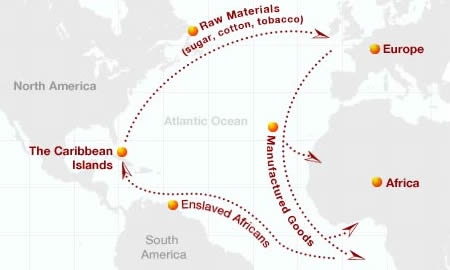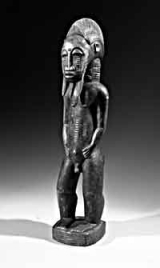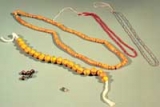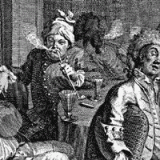The Three Legs of the Slavery Voyage
The transatlantic slave trade was organised on a three-point circuit, and so is commonly called the ‘triangular trade‘. Risks were high, but on a ‘good’ voyage, a profit could be made at each point of the triangular trade.
Click on the areas involved in the transatlantic slave trade to find out more:

Europe

The leaflet features an engraving of slaves packed into the hold of a ship. It is based on the proportions of the slave ship the Brookes., from Liverpool. It shows 295 slaves.
Slavery has existed for thousands of years. It was present in ancient Egypt, Greece and Rome. The Vikings had slaves and slavery was widespread throughout the Muslim world. There was slavery in Africa and Christian Europe. Bristol in about AD 1100 was a major slave market for selling English children to Ireland. The transatlantic slave trade, however, was far more impersonal and efficient than earlier forms of slavery, taking more people further away from home than ever before. It denied the humanity of the African people it enslaved by classifying them and their descendants as property (or ‘chattel’). It exclusively identified African people with the status of slaves.
Africa

According to Baule peoples’ tradition each person has a mate who lives in the ‘other world’. If the spirit spouse is thought to be jealous of the real spouse, a figure of the spirit husband or wife is made and cared for by their spouse.
The main source of slave labour in the early European colonies, were the people who lived there already. They had little immunity from European diseases and were so brutally treated that they rarely lived more than a year or two after being enslaved.
In 1511, a friar of the order of Saint Dominic, called Bartolome de las Casas, called for the Africans to be substituted in their place in the Spanish colonies. The Africans, he argued, had had long contact with Europeans and made fitter, more skilled and dependable workers. Africans had been used as workers on Spanish and Portuguese plantations elsewhere. He later regretted his actions. But by then it was too late. More and more enslaved peoples from Africa were captured, sold and brought across the Atlantic Ocean to work on the plantations.
Caribbean

An Ideal Plantation, from Diderot’s Dictionnaire des Sciences
Voyages of exploration took the Europeans to the Americas in the 1400s, or, as they knew it, to the ‘New World’. In areas like the Caribbean Islands, they established ‘plantations’, where they grew crops such as sugar and tobacco. These were luxury goods produced for the European market.
The enslaved Africans who worked on the plantations received no form of payment and were brutally treated. They were separated from their families and from people who shared their language and customs. Even when the slave trade was ended in 1807, enslaved Africans were still not not free until 1834. After this time many still worked for their old owners as ‘apprentices’until 1838, and thereafter many had no choice but to continue working for their old owners for low wages.
Europe to Africa - what was taken there?

Glass Beads
European traders bought manufactured goods from home and abroad. These were shipped to the west coast of Africa and traded for enslaved Africans. This part of the route is often called the ‘outward passage’.
Africa to Caribbean - Slaves

Pockock’s The Southwell Frigate vignette showing slaves boarding a long boat.
The enslaved men, women and children were shipped from Africa to the Caribbean and the Americas where they were sold to plantation owners. This part of the route is often called the ‘middle passage’.
Caribbean to Europe - what was brought back?

A Modern Midnight Conversation, by William Hogarth, 1734
Goods produced on the slave plantations, such as sugar and tobacco, were shipped back to Europe for processing and resale. This part of the route is often called the ‘return passage’


